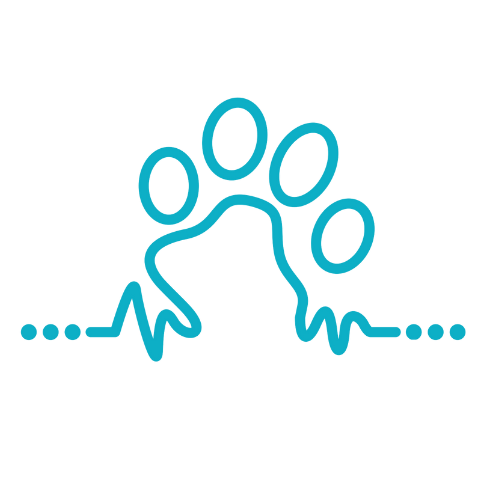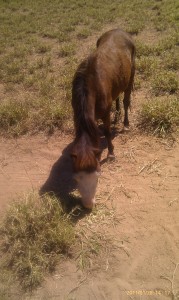You may be well aware that ‘bighead’ is a preventable and treatable condition common in paddock horses in Central highlands district. However this past wet season over Christmas 2010 and January 2011 has resulted in an above normal amount of available Buffel grass (Cenchrus ciliaris ). Subsequently this means that you are likely to experience ‘Bighead’ in your horses grazing this pasture regardless of your current management practices.
Bighead in review: Bighead, also known as Nutritional secondary hyperparathyroidism is a condition whereby tropical pastures high in oxalate and subsequently insoluble calcium oxalate crystals prevent absorption of dietary calcium. Consequently the calcium deficiency and altered calcium: phosphorus ratio in the diet causes calcium from bones in the horse to be released into the blood stream. Loss of calcium from the bones results in decreased porosity and subsequent bone remodelling resulting in soft bones that become ‘swollen’/misshapen. Horses commonly affected are aged between 6 months to 7 years, with clinical signs showing in spring and summer, often 2-9 months after grazing pastures high in oxalate (particularly in young immature plants).
Clinical Signs :
- Lame/ stiff gait
- Joint tenderness
- Reluctance to move
- Mild swelling of pasterns
- Illthrift
- Rough coat
- Weight loss
- Reduced feed intake
- Ridge over nasal bone
- Swollen jaws and cheek bone
- Nasal discharge
- Difficulty breathing/chewing (severe cases)
Treatment and prevention of Big Head is aimed at correcting the calcium deficiency, however the horse can only consume 20mg/kg/day of calcium when supplemented with 10mg/kg/day of phosphorus, in other words effective supplementation of Calcium is achieved at a ratio of 2 parts Calcium : 1 part Phosphorus. Thus without appropriate supplementation of phosphorus, correcting the calcium deficiency by increasing calcium concentration alone is ineffective and a waste of resources in prevention and treatment of Bighead. This 2:1 ratio is for maintenance only, restoring normal daily losses or mild calcium deficiencies, so when there is a significant negative calcium balance in the diet as seen in pastures with significant buffel grass content there will be greater than normal losses of Calcium. Thus supplementing with this ratio will only delay the clinical signs, not prevent the condition. With the current substantial availability of buffel grass we shall expect there will be significant calcium deficiencies in paddock fed horses, therefore we advise you to consider the possible changes to avoid significant outbreak in your horses.
Our Recommendations
-
- For prevention the best block on the market is called Calsorb – it contained chelated calcium which is not bound by oxylates like other forms of calcium are,
- Increase frequency of supplementation / extend time of consumption
- i.e. Feed supplements daily – as opposed to ad lib or using monthly lick blocks
- i.e Feeding horses individually or locking them in a yard to ensure they get adequate amount of supplement
- Avoid grazing pastures high in oxalates for longer than one month
- Graze on pastures with equal mixture of native pastures, legumes and tropical pastures.
- Appropriate Supplement choice
- Palatable, safe, and effective.
- Specially formulated, – appropriate ratio of Calcium to Phosphorus,
- Addition of sodium, selenium, chloride, magnesium aids absorption of calcium.
Please note – Other grasses with >0.5% oxalate content are capable of producing bighead, such grasses are Setaria, Pangola grass, Guinea, grass, Kikuyu, Para grass, Signal Grass and Purple Pigeon grass. Grasses not associated with Bighead include: all native grasses, Rhodes grass, paspalums, couches, creeping blue grass, ryegrass and sorghums.
Use of injectable or oral forms of calcium and other minerals are available but must bear in mind their use is only effective with dietary supplementation and use is also only recommended in known deficiencies i.e horses exhibiting clinical signs of bighead. ‘Theracalcium’ can be ordered if you have clinical bighead and administered daily with feed supplementation.
Once the mineral deficiency/imbalance is corrected, clinical signs will resolve and the bones will gradually re-mineralize after 4-6 weeks, however obvious boney changes may take several months and sometimes years to return to normal.
For more information please ask us at Gray St Veterinary Clinic.
ph. 07 49824868
email: graystreet@emeraldvet.com

